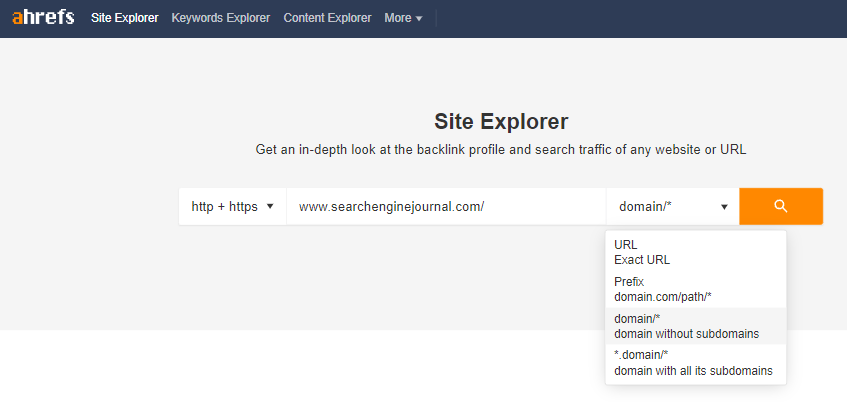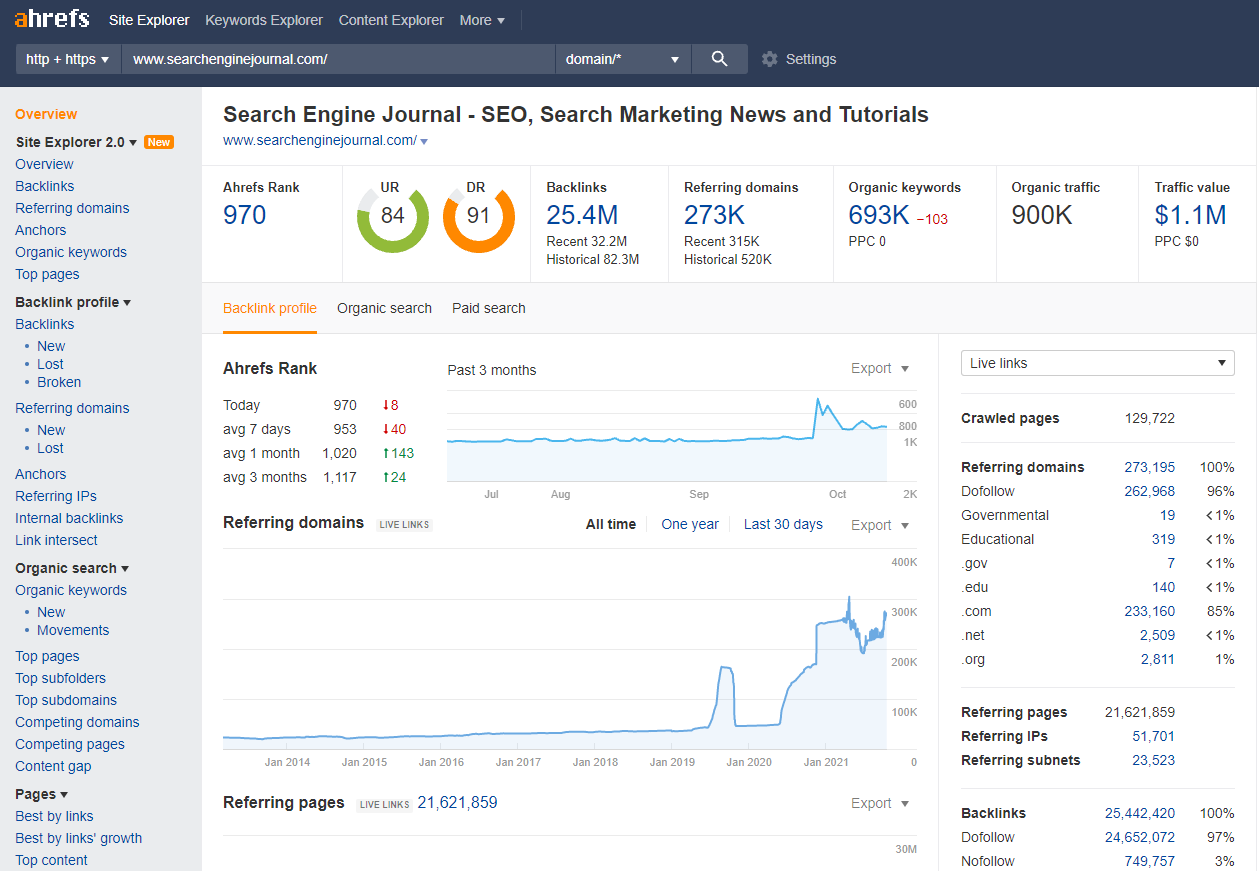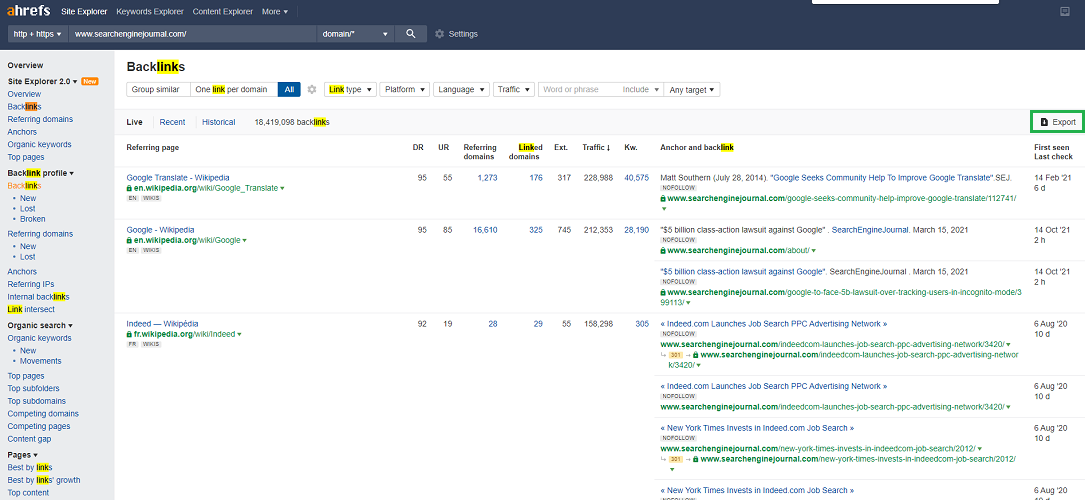Sometimes, the key to boosting your clients’ search rankings isn’t about outsmarting the competition; it’s about imitating what they’re doing and doing it better.
A little spying on your clients’ competitors can give you a lot of actionable ideas on how to get more search traffic for your client.
Research The Inbound Links Of The Competition
By using tools like Site Explorer to analyze the competition’s inbound links, you can understand both their strategy and their audience.
For example:
- Links from industry blogs. Your clients’ competitors might be boosting search rankings by guest posting on high-quality blogs or wooing influencers from these blogs. They might exchange free samples or even pay influencers for reviews and links to their pages.
- Links from the media. Your clients’ competitors could be reaching out to people in the media as a link-building strategy. They might do this through direct PR outreach or through sites like helpareporter.com, which connect businesses with journalists.
- Links from social sharing. If you see lots of inbound links from social networks, your clients’ competitors might be masters of social sharing.
Just put the domain name of your competitor into the Site Explorer and pick the “domain” option for the drop down menu:

This will give you an overview of that site’s link profile:

If you then go to Backlinks section, you’ll get the full list of links pointing to this domain and you’ll be able to export them for a more detailed look:

In addition to giving you insight into their link-building strategies, inbound links can tell you a lot about the competition’s audience.
If many links come from people in specific demographic categories, or if inbound recommendations cluster within a particular geographic area, it’s likely that your clients’ competitors are targeting those specific markets.
Click on some of these links, particularly reviews, and see what the audience says about your clients’ competition. If reviewers complain about the competition’s products, use the information to tweak your SEO strategy.
For example: if your client owns a restaurant, and reviewers complain that your client’s chief competitor doesn’t offer good seafood dishes, your client might gain some leverage by trying to rank for keyword phrases like “best seafood restaurant.”
Also, if the competition’s unhappy reviewers come from a specific geographic area, use local SEO tactics to target those customers.
Investigate Their Keywords
One of the best ways to improve SEO is to discover keywords that your clients’ competitors aren’t using.
Google’s Keyword Tool can tell you which keywords are most common and competitive, but it can’t give you keyword ideas that the competition hasn’t thought of yet.
To develop new ideas for keywords, try some of these online tools:
- Q&A forums. The questions asked on forums, like Quora and Yahoo Answers, are the same questions people type into Google’s search field.
- eHow and Wikihow. These “how to” sites are built around Google searches, such as “how to fix a leaky faucet.”
- Google autocomplete. Start typing in a search related to your client’s business and see what suggested searches auto-generated by Google. Also, check the “Searches related to” section at the bottom of the search results page.
Browse competitors’ websites and read their content, recording the keyword phrases that they’re using in a notebook or spreadsheet.
If they’re low-competition keywords, incorporate them into your client’s content. If they’re highly competitive, look for different keyword ranking opportunities.
Spy on Their Social Media Pages
Social media shares by themselves don’t improve your client’s link profile. However, a link shared in a tweet could cause a blogger to write about your client’s content and link back to it. In that case, your client’s link profile does improve.
Also, if referrals and increased awareness from social media sends traffic to your client’s website, higher traffic and query volume will improve your client’s search rankings.
Take a look at what your clients’ competitors are doing with their social networks:
- Analyze how they post. Review their posts, along with the content they share, to see what their audience likes most. If they’re using images with every shared link or capitalizing on certain hashtags to get their content shared, try mimicking those strategies. You can use social media analytics tools also.
- Check out their followers. Find common characteristics within their audience, including demographics, occupation, location, and interests.
- Note when they post. If your clients’ competitors get more engagement when they post at certain times of day, suggest that your clients change their posting schedule to boost sharing.
If You Can’t Beat ‘Em, Join ‘Em
Start with simple strategies that are just a little better than what your clients’ competitors are doing — better inbound links, better keywords, and better social media sharing. You’ll be surprised how much these small changes will boost your clients’ search engine referrals.




